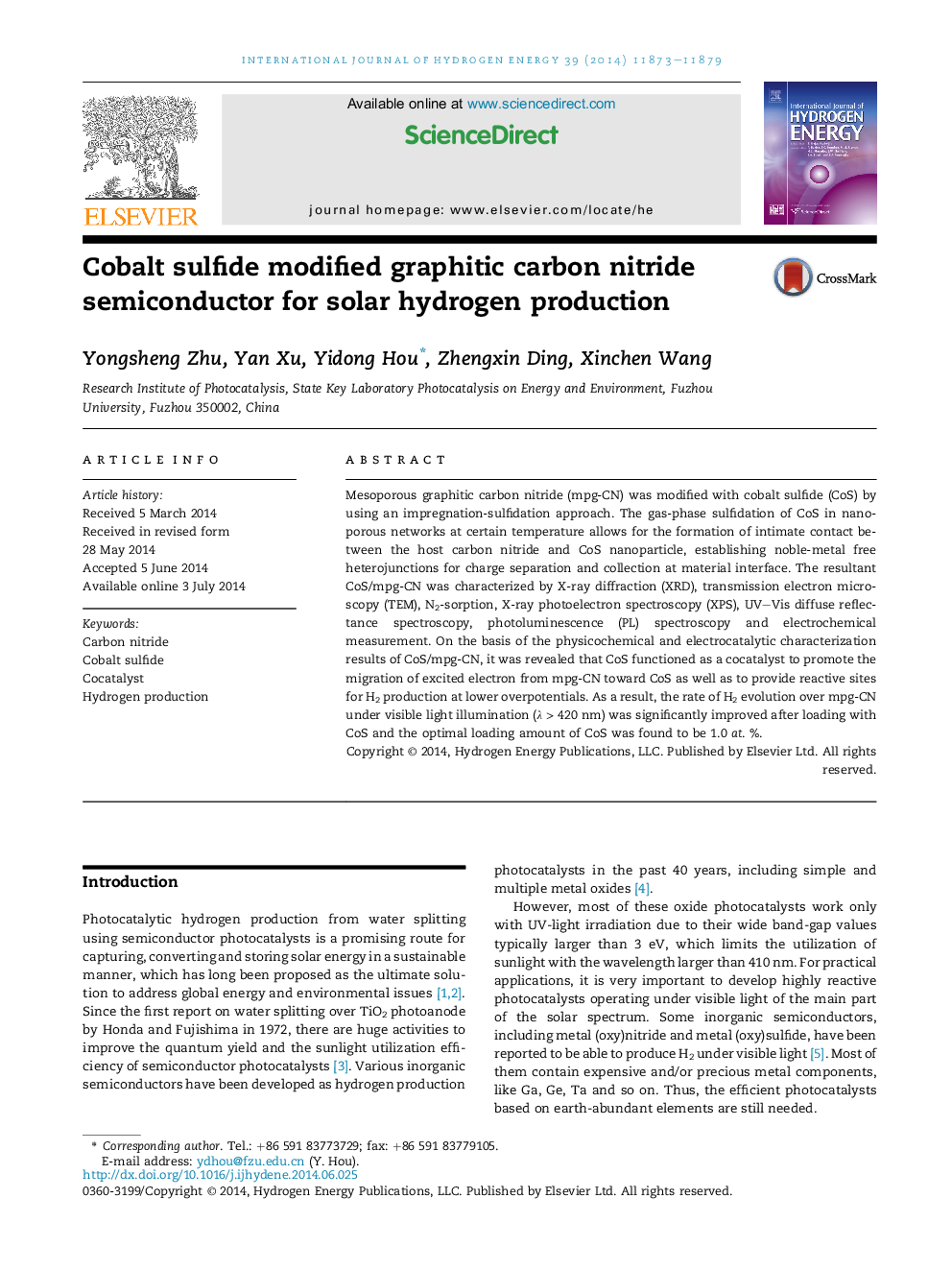| Article ID | Journal | Published Year | Pages | File Type |
|---|---|---|---|---|
| 1272986 | International Journal of Hydrogen Energy | 2014 | 7 Pages |
•A noble-metal-free photocatalytic system was developed by modifying mpg-CN with CoS using an impregnation-sulfidation approach.•CoS modified mpg-CN showed enhanced photocatalytic activity for H2 evolution under visible light.•CoS improved the kinetics of hydrogen production in the photocatalytic system.
Mesoporous graphitic carbon nitride (mpg-CN) was modified with cobalt sulfide (CoS) by using an impregnation-sulfidation approach. The gas-phase sulfidation of CoS in nanoporous networks at certain temperature allows for the formation of intimate contact between the host carbon nitride and CoS nanoparticle, establishing noble-metal free heterojunctions for charge separation and collection at material interface. The resultant CoS/mpg-CN was characterized by X-ray diffraction (XRD), transmission electron microscopy (TEM), N2-sorption, X-ray photoelectron spectroscopy (XPS), UV–Vis diffuse reflectance spectroscopy, photoluminescence (PL) spectroscopy and electrochemical measurement. On the basis of the physicochemical and electrocatalytic characterization results of CoS/mpg-CN, it was revealed that CoS functioned as a cocatalyst to promote the migration of excited electron from mpg-CN toward CoS as well as to provide reactive sites for H2 production at lower overpotentials. As a result, the rate of H2 evolution over mpg-CN under visible light illumination (λ > 420 nm) was significantly improved after loading with CoS and the optimal loading amount of CoS was found to be 1.0 at. %.
